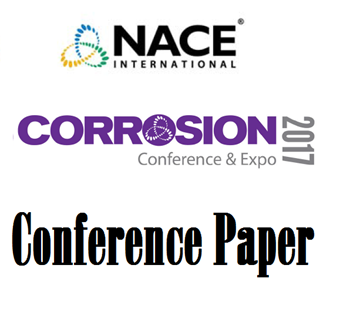Search
Products tagged with 'ph'
View as
Sort by
Display
per page
02265 CARBON PAINT ANODE FOR REINFORCED CONCRETE BRIDGES IN COASTAL ENVIRONMENTS
Product Number:
51300-02265-SG
ISBN:
02265 2002 CP
Publication Date:
2002
$20.00
04284 Long-Term Performance of Steel in Concrete Immersed in Sea Water
Product Number:
51300-04284-SG
ISBN:
04284 2004 CP
Publication Date:
2004
$20.00
51316-7083-The Role Of Local Chemistry Changes In Repassivation Of Localized Corrosion – A Review
Product Number:
51316-7083-SG
ISBN:
7083 2016 CP
Publication Date:
2016
$20.00
51316-7333-Comparison of Corrosion Behavior in HIC Test Solutions for FFP evaluation
Product Number:
51316-7333-SG
ISBN:
7333 2016 CP
Publication Date:
2016
$20.00
51317--9747-Recent Failures of 2205 Duplex Stainless Steel in FGD Scrubbers - Could They Have Been Avoided?
Product Number:
51317--9747-SG
ISBN:
9747 2017 CP
Publication Date:
2017
$20.00
51318-10494- The Water pH and Gas Evolution Risks Associated with the Use of Aluminium and Zinc Anodes for the Internal Cathodic Protection of Offshore Monopiles
Product Number:
51318-10494-SG
Publication Date:
2018
$20.00
51318-10873-Influence of temperature and pH on SCC assisted by H2S susceptibility of 22%Cr duplex
Product Number:
51318-10873-SG
Publication Date:
2018
$20.00
51318-11581-Exploratory evaluation of interface effects of cathodic prevention in concrete
Product Number:
51318-11581-SG
Publication Date:
2018
$20.00
A Review Of Chloride Stress Corrosion Cracking Factors For Austenitic Stainless Steel
Product Number:
51322-17524-SG
Publication Date:
2022
$20.00
Cathodic Protection and MIC - Effects of local electrochemistry
Product Number:
51317--9452-SG
ISBN:
9452 2017 CP
Publication Date:
2017
$20.00
Corrosion Behavior of Additively Manufactured and Wrought Ti-6Al-4V Alloys in Phosphate Buffered Saline Solutions
Product Number:
51321-16930-SG
Publication Date:
2021
$20.00
Corrosion Properties of Ni-Al Bronze and it’s Main Alloying Elements - Effect of pH
Product Number:
51317--9306-SG
ISBN:
9306 2017 CP
Publication Date:
2017
$20.00
- 1
- 2












